- News
- Reviews
- Bikes
- Accessories
- Accessories - misc
- Computer mounts
- Bags
- Bar ends
- Bike bags & cases
- Bottle cages
- Bottles
- Cameras
- Car racks
- Child seats
- Computers
- Glasses
- GPS units
- Helmets
- Lights - front
- Lights - rear
- Lights - sets
- Locks
- Mirrors
- Mudguards
- Racks
- Pumps & CO2 inflators
- Puncture kits
- Reflectives
- Smart watches
- Stands and racks
- Trailers
- Clothing
- Components
- Bar tape & grips
- Bottom brackets
- Brake & gear cables
- Brake & STI levers
- Brake pads & spares
- Brakes
- Cassettes & freewheels
- Chains
- Chainsets & chainrings
- Derailleurs - front
- Derailleurs - rear
- Forks
- Gear levers & shifters
- Groupsets
- Handlebars & extensions
- Headsets
- Hubs
- Inner tubes
- Pedals
- Quick releases & skewers
- Saddles
- Seatposts
- Stems
- Wheels
- Tyres
- Health, fitness and nutrition
- Tools and workshop
- Miscellaneous
- Cross country mountain bikes
- Tubeless valves
- Buyers Guides
- Features
- Forum
- Recommends
- Podcast
An introduction to bikepacking – three ways to try it and what to pack

This article includes paid promotion on behalf of Decathlon
There are three types of bikepackers: those who go light and fast, those who go fully loaded and those who fill the mid space in between the two ends of the spectrum. With help from our friends at Decathlon we aim to help you find out exactly what kind of bikepacker you are and give you some hints and tips on packing for the journey.
What is bikepacking?
In its simplest terms it is going on a ride carrying everything you need to survive overnight and be totally self-sufficient. You’ll need a bike that’s up for the job, food, cooking equipment and gear to keep you warm and dry at night, plus snacks, tools and possibly lights too.
So what is the ideal bike for a bikepacking adventure? Thanks to our friends at Decathlon we have a Riverside Touring 920 here. With classic looks, interesting additional features, the kind of geometry you'd need for multi-day adventures plus good tyre clearance, this looks like the ideal candidate for a go-everywhere gravel bike.
The frame itself has a classic 71.5-degree head angle and a 73-degree seat angle, with four sizes in the range meaning that it’ll fit lots of riders. All bikes get 29er wheels to help smooth out the bumps in the trail, plus 2.25in Schwalbe Thunderburt tyres offering better traction than skinnier rubber. The bike is kitted out with a 1x11 SRAM Rival groupset.
Elsewhere on the Riverside is a wide flared bar which is size specific, and a Shimano Deore XT dynamo hub with a USB charging port built into the stem to charge lights, GPS devices or phones as you ride, perfect for overnighters.
In terms of kit, this bike has all the rack mounts you could want, there are mounts on the frame for bags and bottles, mounts on the fork for cages and dry bags and you can use panniers too – not that we’d probably recommend them for off-road riding!
What should I take with me?
Packing smart is the key with bikepacking, whether you intend to go light and fast or slower and well laden. The main load carriers will usually consist of a handlebar bag, a seat pack and a frame pack. You don’t want the steering to feel too heavy, so I’ll try to keep lighter items like sleeping gear at the front. The seatpack tends to contain clothes and food. Stuff you’ll need quickly like snacks and tools will go in a frame pack.
Bikepacking – light and fast
Light and fast riders will be concerned with keeping moving fast along their route, so when preparing will look for lightweight bags and may even forgo one of the bike bags. For the light and fast style you’ll pack essentials like tools but these will be light and well thought out, so no duplicates! You’ll also pack some food but no stove, or at least a very light one, so you might be restricted to eating cold stuff or finding a pub or café to stop at along the way for dinner.
You’ll also go on one change of clothes only, but we’d recommend packing a down jacket for sleeping in or if the weather takes a turn for the worse – that’s when a jacket becomes an item of safety gear not just clothing.
Light and fast sleeping options are usually a really lightweight sleeping bag and a bivvy. Some riders will carry a thin inflatable mattress too for comfort and some might forgo the bivvy and opt for a minimalist tent or tarp rigged up with a pole or your bike wheels.
Mid-weight bikepacking
If light and fast doesn’t sound like a whole bundle of laughs to you, you’ll probably find you fall into the middle ground of bikepackers who are happy to carry a little more and make life on the road more comfortable.
Generally, you will pack all three bags – a handlebar bag, a frame bag and a seat pack. It’s worth thinking about swapping a bar bag for two fork cages and bags, but make sure they are evenly packed!
In the bar bag, it's best to put all your sleeping gear, so a sleeping bag, inflatable mat and a bivvy or tarp if it will fit. All rolled up together, that’s pretty much as heavy as you'll want to make the front bag.
It's tough to get into a bar bag when you are on the move so don’t be tempted to stuff extra layers in there too unless you can be sure you don’t want them in a hurry.
In the frame bag pack your tools, snacks, wallet and perhaps your phone too if you're not carrying it in a top tube bag. If the bike you're using won’t take a frame bag then you could think about carrying a lightweight backpack to carry the easy-access stuff and extra water if the weather's hot.
In the seat pack go my tarp or tent, tent pegs, a length of parachute cord, a stove, the coffee and my food. For cooking purposes a gas stove is probably better to start off with, allowing you a little more flexibility with your cooking. Simple aluminium pot(s) will finish off this kit, plus you can pop all your clothes in here too, helping to pad things out and stop the cooking gear rattling around.
In fairly good weather, spare clothes could consist of: an extra pair of Lycra shorts, a fresh pair of socks, a waterproof, a down jacket and a pair of thermal leggings to sleep in at night – it’ll be worth it to get out of that Lycra!
Fully loaded bikepacking
Moving on from here, depending on the length of your trip, the weight of your tent and the amount of extra gear you want or need to take, you could fall into the category of heavyweight bikepacker. You'll probably be planning multi-day expeditions where you really will need to fend for yourself.
To take a one-person tent such as the one shown here, plus sleeping bag, sleeping mat and all of the kit, spares and food already mentioned, you’ll need to pack a handlebar bag with your sleeping bag in and then strap the tent to this. Or perhaps use fork leg cages and dry bags to store extra gear. Then out at the back your seat pack will be filled with food, that stove and cooking gear and spare layers.
You might want to think about a larger frame bag that fills the full triangle of your bike so you can store more without any wasted space. If you do choose to do that, though, you’ll need to make some other arrangements – perhaps a small and light pack – just for water.
What else do you need to take?
Other essential items you'll need to squirrel away include lights for emergency purposes. This bike has lights fitted – they won’t help me see, but they will let me be seen in an emergency. I’d recommend a small front light too – about 700 lumens will see you through ok; you are likely to need one at some point overnight if camping out and you can rely on it to navigate in an emergency. You’ll also need a reliable GPS or a map or both – don’t get lost, it’d ruin the fun!
You’ll need the right pedals and shoes too. Use shoes that you know you are comfy in and pedals that you are used to. If you have room you might want to pack a small pair of lightweight shoes or flip flops; you could easily strap flip flops to the outside of your bag so you can get out of your riding shoes at night when you are at camp.
If you don’t have room for a full first aid kit, it’s still a good idea to carry a few emergency essentials such as a triangle bandage, some bandages to stem bleeding, cleansing wipes and antiseptic cream.
Is there anything we have missed or do you have some tips you could share? Let us and the other viewers know in the comments below.
Thanks to our partners in this feature, Decathlon - www.decathlon.co.uk
Latest Comments
- HoarseMann 4 hours 12 min ago
Probably the best course of action in that scenario is to throw the bike over the hedge before they pull up on the moped and hope nobody else nicks...
- ktache 6 hours 14 min ago
New cycling show on Quest this evening. So that's a bonus.
- Rendel Harris 6 hours 23 min ago
I know, but you still have to be able to measure to within 1/16 of an inch (1.5mm) and given that it's an either way measurement you have to be...
- Nick T 6 hours 45 min ago
You would notice the overall bike weight increase, but that's not what we're talking about; he specifically states that you will save effort...
- cmedred 9 hours 56 min ago
Lost control of his car doing 40 mph through a 60 mph corner? Sort of begs for some questions as to how Wan obtained a license to drive in the...
- quiff 10 hours 4 min ago
I do understand that policing resources are limited and need to be prioritised, but do we really have to wait until a KSI before they take action?...
- andystow 10 hours 43 min ago
Still no mention of a driver....
- brooksby 13 hours 25 min ago
Electric car smashed up with 'big pole' in protest against Elon Musk (Bristol Post)...
- chrisonabike 13 hours 29 min ago
Just harness it. In European countries selfish and arrogant people are demanding better cycling facilities (for their convenience) and probably...
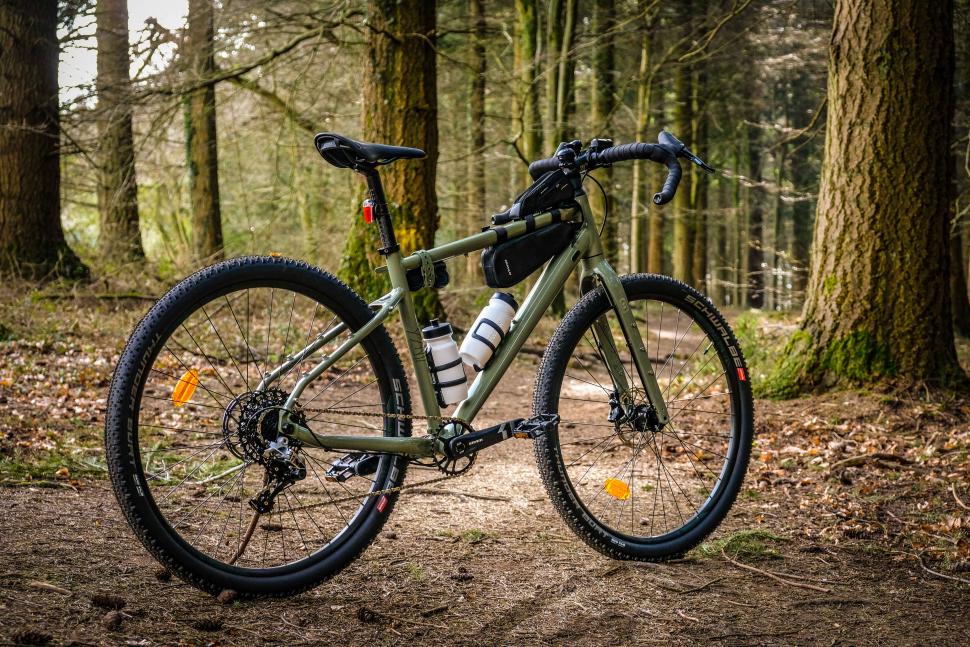
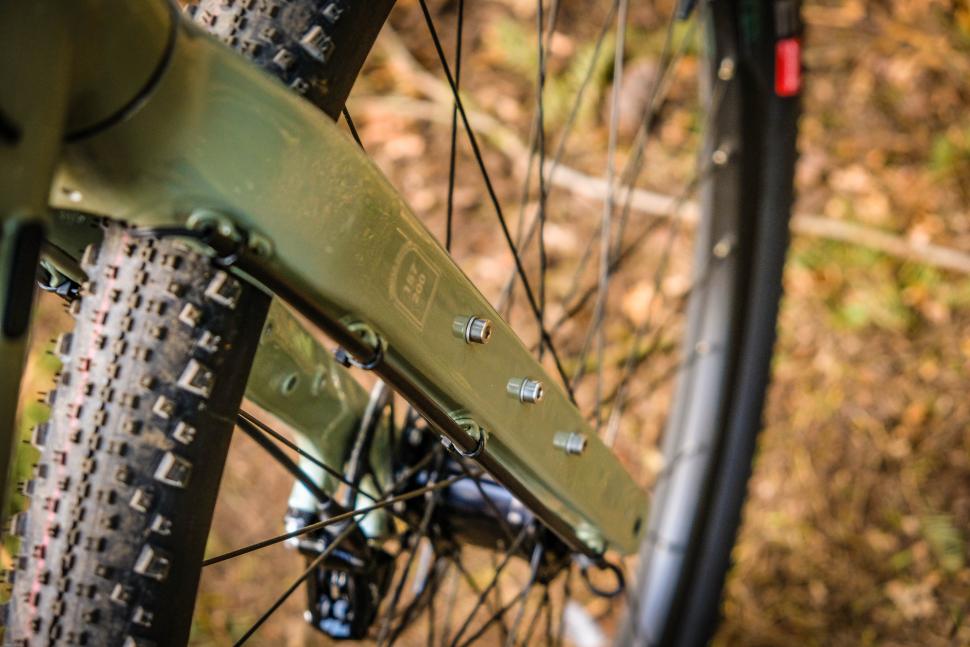

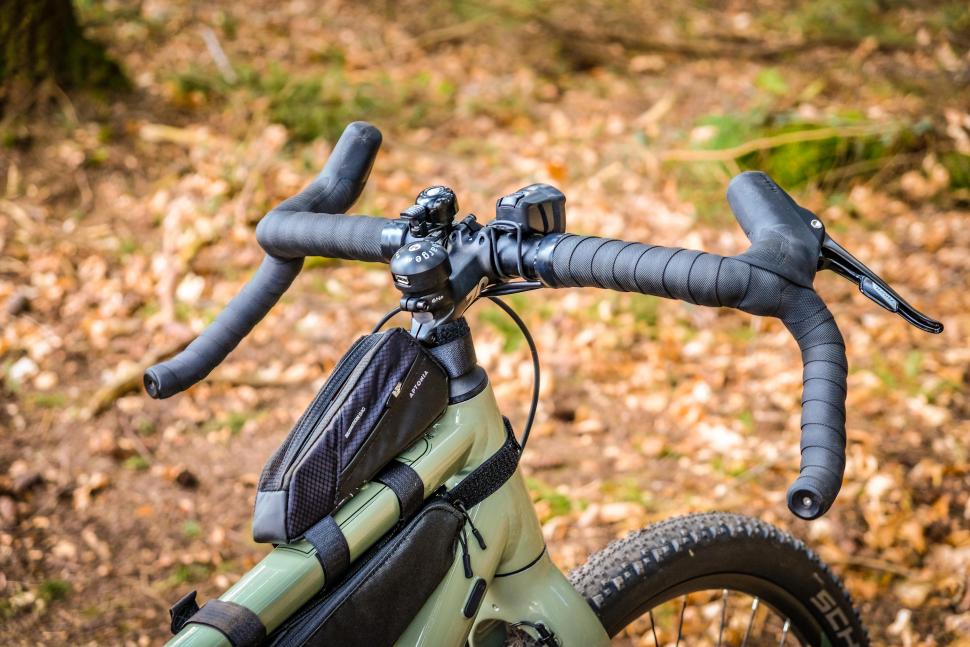
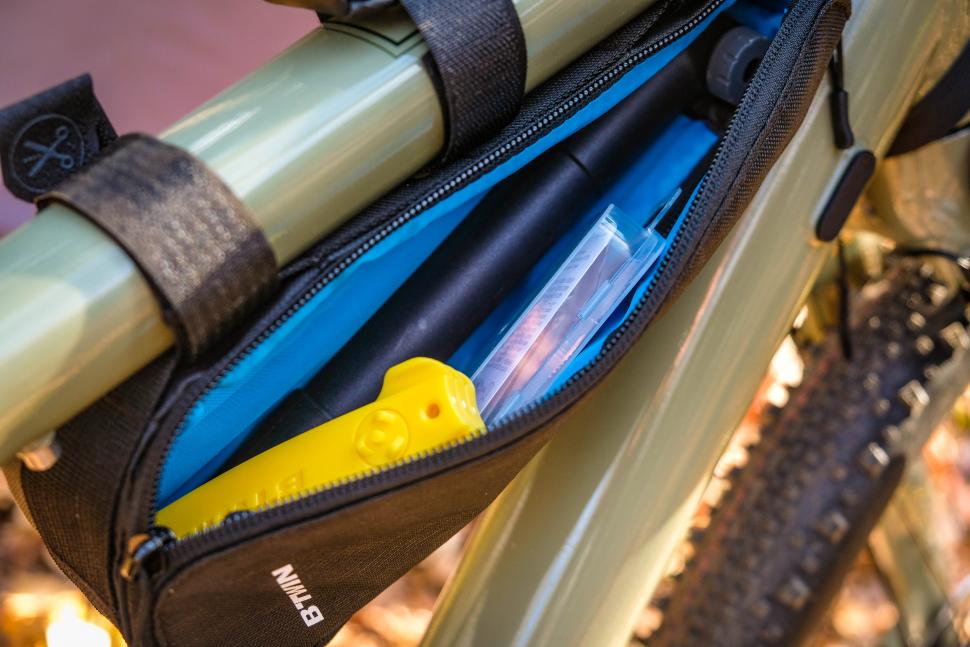
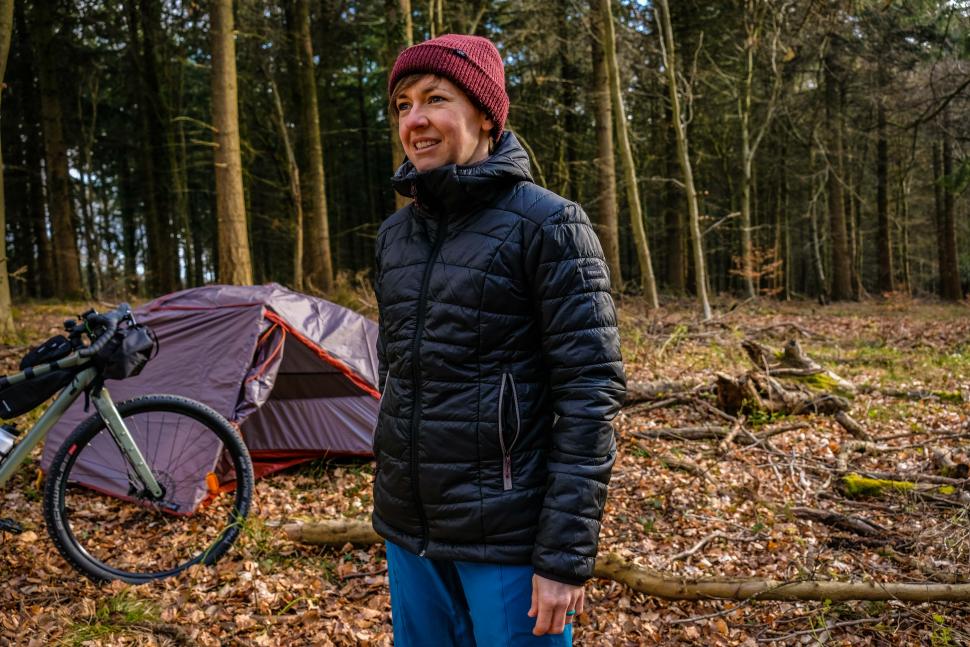
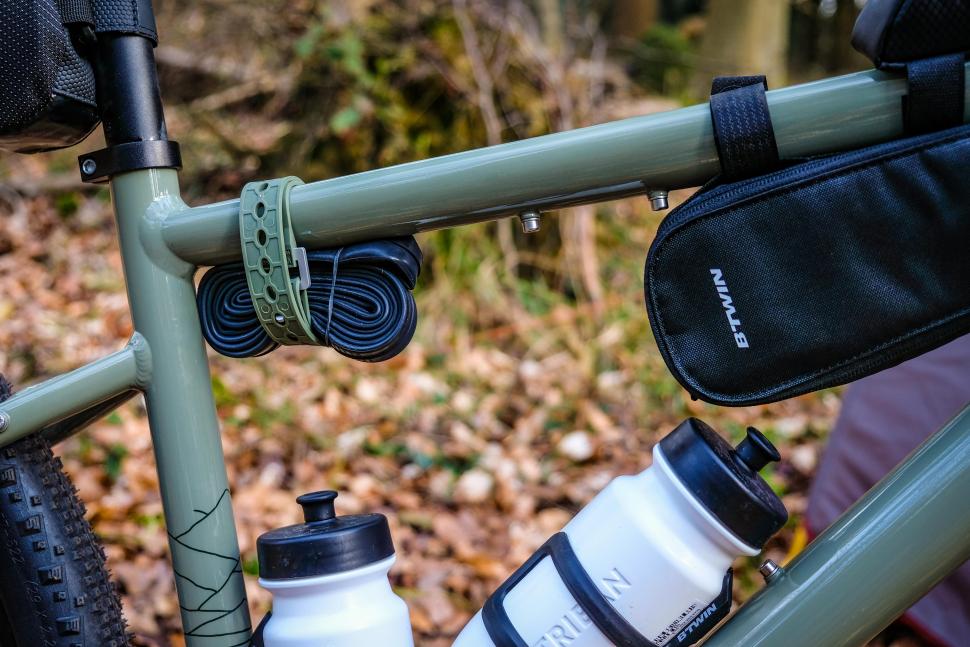
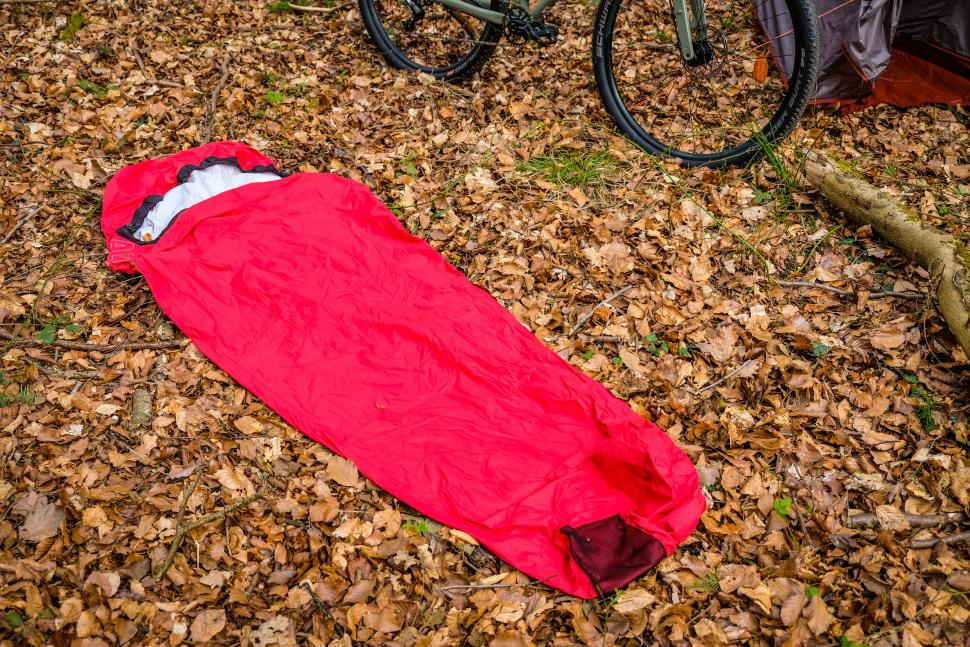
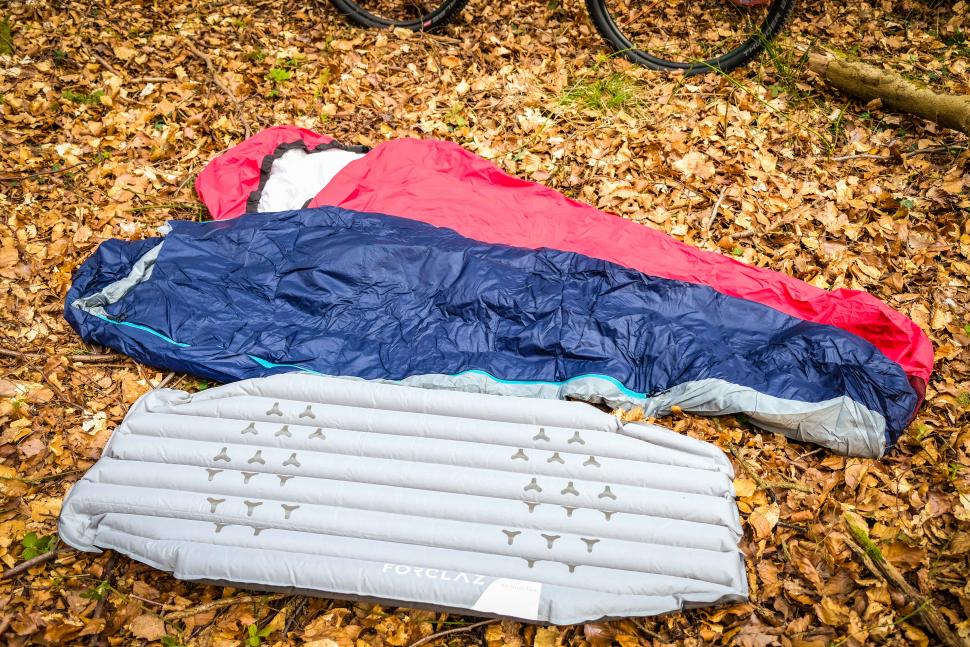
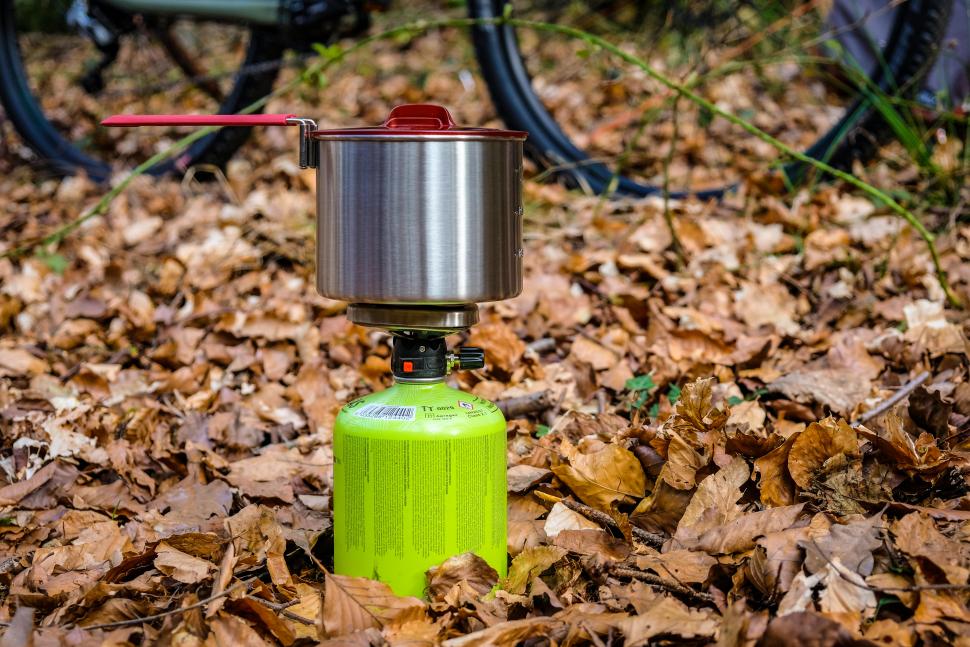



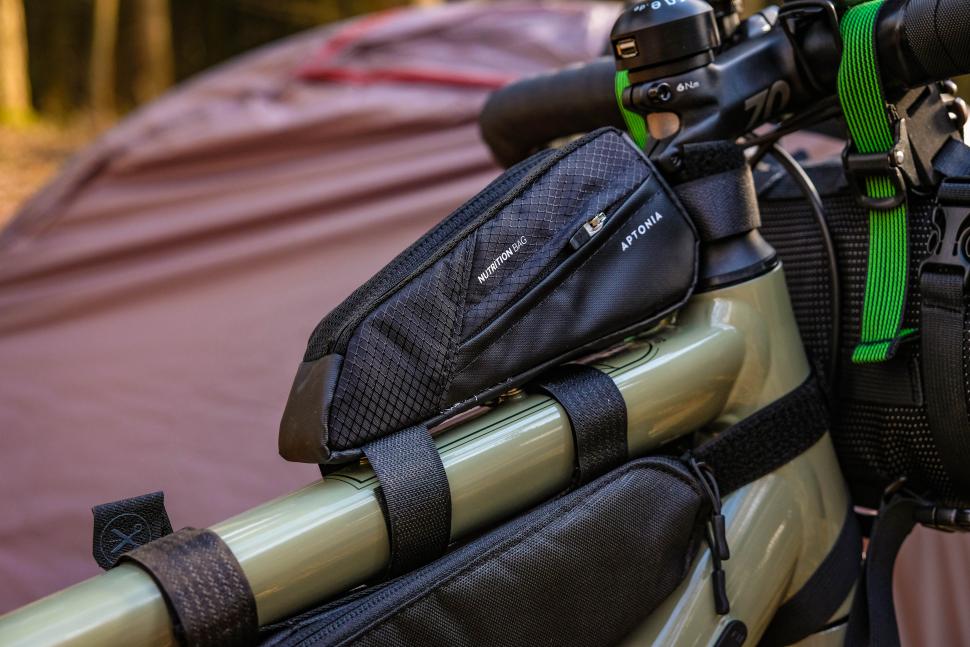

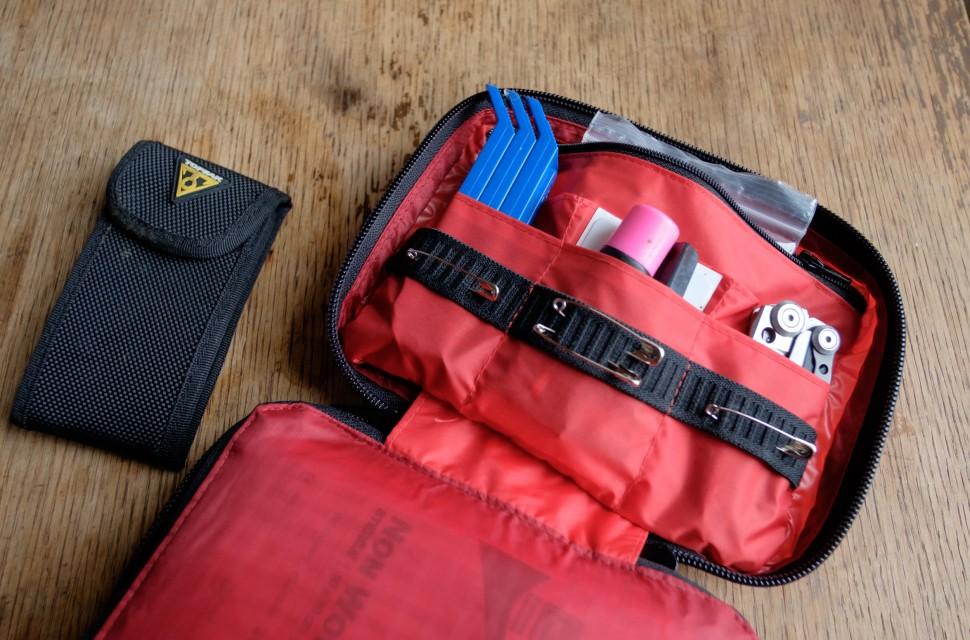
Add new comment
2 comments
What is that saddle bag?
The logo on that saddlebag is Miss Grape; not 100% on the model but quite possibly this one: https://missgrape.net/en/adventure-series/seat-bags/cluster-13-waterproof/